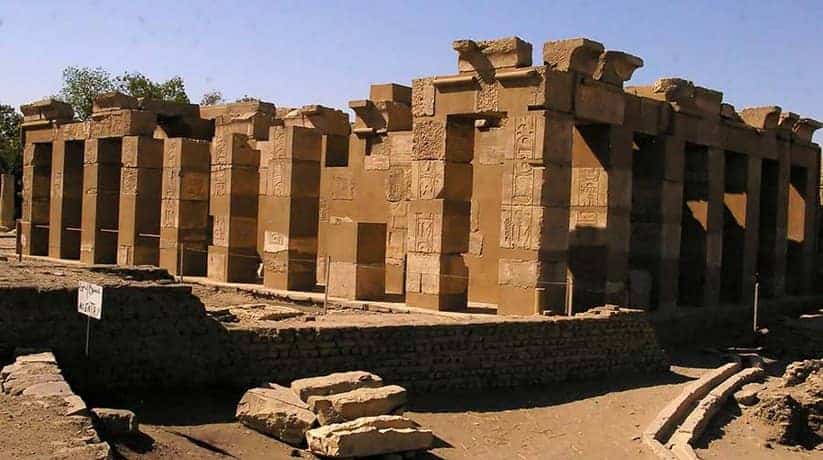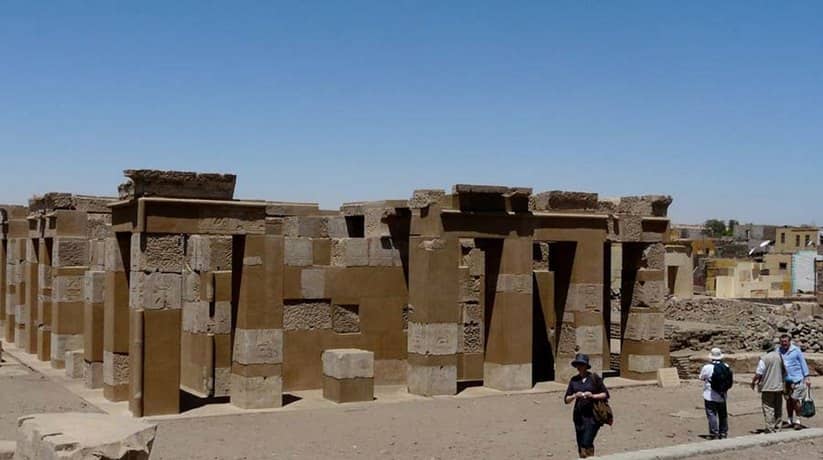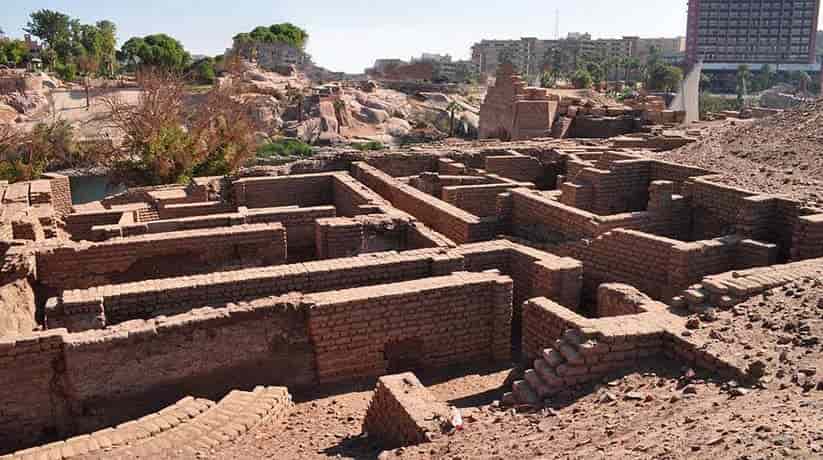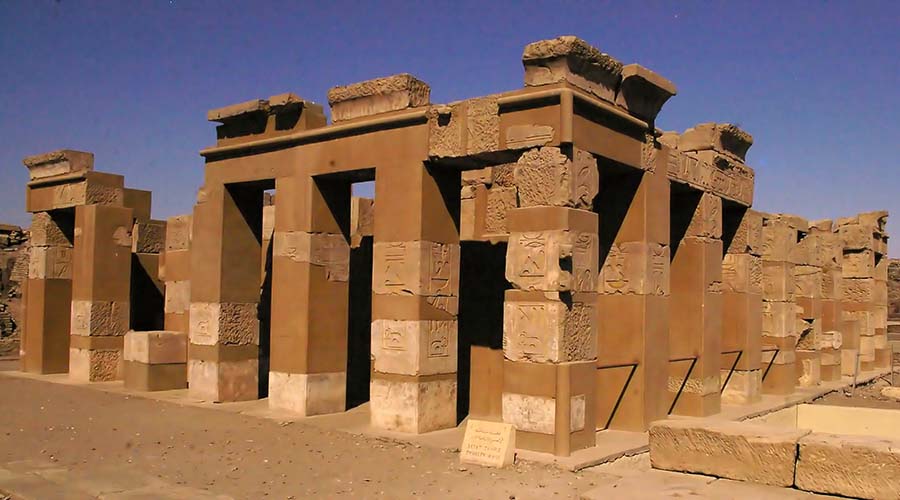Satis temple Aswan Egypt tours, prices, booking, reviews
Satis temple Aswan located at Elephantine Island and also known as Satet temple. In fact, Satis was the consort of Khnum. Satis temple Aswan consists of several rooms and a surrounding gallery. The entrance located to the right of the front facade of the temple. It communicates with a large hall with two pillars that decorated with Hathor heads. Within this hall, there is a doorway on the northern rear wall. It leads to a chapel dedicated to Amun. Moreover, the temple has a door on the left of the rear wall. In fact, this door leads to other rooms. The newest, reconstructed temple has carved and painted stone blocks. They show Thutmose III in front of various members of the Elephantine triad. In some areas the original blocks missed. In fact, only 500 blocks recovered. The German team drew in missing scenes, though in a sensitive manner.
The ancient island of Elephantine located opposite modern Aswan in southern Egypt. In fact, the island served by several temples which date back to the Ptolemaic Period. They also date back to the Early Dynasty Period. The most famous of the temples on the island is the temple which dedicated to the god Khnum. Satis temple Aswan located in the north of this. It is behind the museum building. In fact, the temple recently restored by the German Archaeological Institute. It was under Dr. Gunter Dryer. This earliest shrine set in a niche which formed by the granite rocks of the cataract. It was just below the temple which reconstructed. In fact, the temple is one of the oldest remaining temples in Egypt. No no texts discovered in the temple.
Further details about Satis temple Aswan:
Many votive offerings found within the shrine. They are figures of children and also a squatting ape holds it’s young. The temple frequented by mothers who hope to get birth. It also frequented by mothers who bring thanksgiving offerings for a newly born child. Satis temple Aswan supposed to have an image which stood here and protected by two small mud brick rooms. But unfortunately, it is no longer extant. In front of these rooms was either a courtyard which enclosed by more walls, or even a roofed hall. By the Old Kingdom, the small shrine replaced by a larger court or hall. In fact, there are votive offerings which found at the shrine. There were some objects which inscribed with the names of a few kings from the 6th Dynasty.
Most were plaques who bear the names of Pepi I and Pepi II. Rock inscriptions of the kings Merenre and Pepi II also found on the walls of the niche. In the early part of the Middle Kingdom (11th Dynasty), a completely new shrine built of mud brick. It also carved and painted stonework. In turn, this structure replaced late in the Middle Kingdom. It was during the 12th Dynasty, by a temple built completely of stone. Both of these structures were extensions of the Old Kingdom temple. However, in the New Kingdom, a dramatic change took place. It was when the 12th Dynasty stone temple dismantled.
More details about Satis temple Aswan:
Moreover, the ancient shrine filled in with blocks of stone to the level of the top of the boulders. The area then paved over. The 18th Dynasty kings, Hatshepsut and Thutmose III, built a new stone temple. It was on top of the old one. However, a shaft in the floor of the new temple built into it’s floor. It connected it with the original shrine below. Hence, to travel down these steps is to descend back into time. In fact, Satis temple Aswan also modified and extended through the Greek period.
















